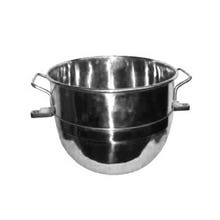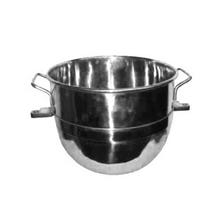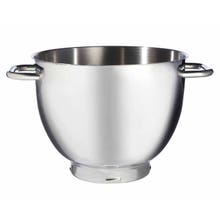
Columbus
635 West Broad St
Columbus, Ohio 43215
- Monday - Friday: 8:00am-5:00pm
- Saturday: 8:00am-12:00pm
- Sunday: closed
- Phone: (614) 464-0505
- Toll-free: (800) 235-3325
- Fax: (866) 534-6024
Detroit
27041 Greenfield Road
Southfield, Michigan 48076
Pennsauken
5241 State Hwy 70
Pennsauken, New Jersey 08109
- Monday - Friday: 8:00am-5:00pm
- Saturday: 8:00am-12:00pm
- Sunday: closed
- Phone: (856) 254-0042
- Toll-free: (855) 493-8009
- Fax: (877) 369-1108
My Store for Pickup:
No Store Selected for Pickup Open store locator to select your locationMixing Bowls
In the realm of baking and cooking, mixing bowls hold a pivotal role. They are the unsung heroes of both professional and home kitchens. From whipping up a simple batter to preparing intricate recipes, these bowls are indispensable. They come in various materials, sizes, and features, each with its unique benefits. The choice of a mixing bowl can significantly impact the outcome of your culinary creations. It can affect the texture of your batter, the ease of mixing, and even the flavor of your dish. In this comprehensive guide, we delve into the world of mixing bowls. We explore their importance, the different types available, and how to choose the right one for your needs. Whether you're a seasoned chef, a home baker, or a culinary enthusiast, this article will equip you with valuable insights. Let's embark on this journey to understand and appreciate the humble mixing bowl.
The Essential Role of Mixing Bowls in Baking and Cooking
Mixing bowls are the backbone of any kitchen, professional or home-based. They serve as the primary vessel for combining ingredients, a crucial step in most recipes. Their importance extends beyond just mixing. They are used for marinating meats, whisking eggs, tossing salads, and even serving food. In baking, they are essential for preparing doughs, batters, and frostings. The shape and size of a mixing bowl can influence the quality of your batter or dough. A wide, shallow bowl is ideal for whisking and aerating mixtures, while a deep bowl is perfect for preventing spills during vigorous mixing. In essence, mixing bowls are not just containers. They are tools that facilitate the cooking process, contributing to the success of your culinary endeavors. Understanding their role is the first step towards making informed choices when selecting your baking equipment.
Choosing the Right Material for Your Mixing Bowls
The material of your mixing bowl can significantly impact its performance and longevity. Different materials have unique properties that make them suitable for specific tasks. For instance, some materials are excellent heat conductors, making them ideal for recipes that require temperature control. Others are resistant to odors and stains, ensuring that flavors don't transfer between recipes.
Here are the most common materials used in mixing bowls:
- Stainless Steel
- Glass
- Ceramic
- Plastic
Each material has its pros and cons, which we will explore in the following sections.
Stainless Steel Bowls
Stainless steel bowls are a favorite among professional chefs. They are lightweight, durable, and resistant to rust and stains. However, they can be reactive with acidic ingredients, altering the taste of your food. They also tend to be slippery when wet, which can be a challenge during vigorous mixing.
Glass Bowls
Glass bowls are non-reactive, meaning they won't interfere with the taste of your food. They are also microwave-safe, making them versatile for various cooking tasks. On the downside, glass bowls are heavy and can break if dropped. They also retain heat, which can be a problem for recipes that require cold ingredients.
Ceramic Bowls
Ceramic bowls are aesthetically pleasing and come in a variety of colors and designs. They are heavy, providing stability during mixing. However, ceramic bowls are not as durable as other materials. They can chip or crack if not handled with care. They are also not ideal for recipes that require temperature control, as they retain heat.
Plastic Bowls
Plastic bowls are lightweight and affordable. They are also available in a variety of sizes and colors. However, they can absorb odors and stains over time. Some plastic bowls are not heat-resistant and can warp or melt in the microwave. It's also important to ensure they are BPA-free for safety reasons.
Sizes and Features to Consider When Selecting Mixing Bowls
When it comes to mixing bowls, size does matter. The size of your bowl can affect the outcome of your recipe, especially when it comes to baking. A bowl that's too small can make mixing difficult and messy. On the other hand, a bowl that's too large can make it hard to thoroughly combine your ingredients.
Here are some features to consider when selecting mixing bowls:
- Size
- Non-slip bases
- Pour spouts
- Handles










